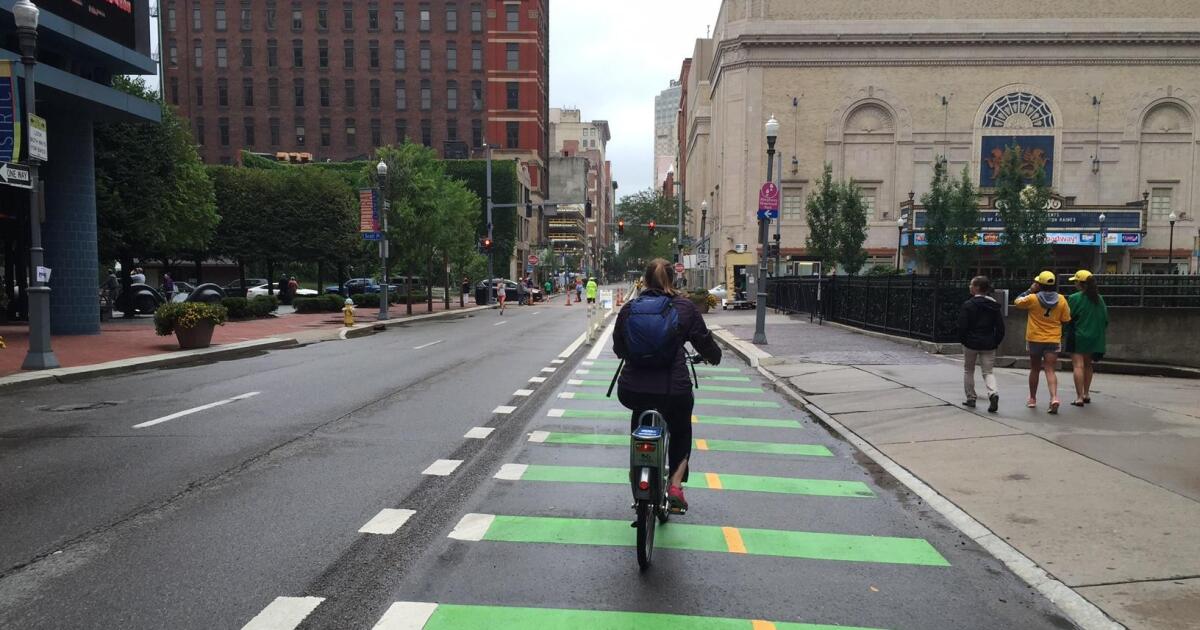Pittsburgh joined an international movement in early 2024 to eliminate traffic fatalities and serious injuries by implementing traffic calming measures and redesigning infrastructure to increase road safety.
The Vision Zero initiative is built on the idea that every loss of life from crashes is unacceptable and completely preventable. It sets the ambitious goal of reducing deaths from crashes to zero.
“ Of course that sounds like maybe an impossible goal, but the reality is that every single traffic death ultimately is preventable,” Pittsburgh City Councilwoman Barb Warwick said.
The number of fatal crashes in Pittsburgh has remained relatively stable over the last five years. However, serious injuries from accidents have steadily dropped since peaking in 2021.
Kyle Ferreira
/
City of Pittsburgh Crash Data Dashboard
Vision Zero takes a multifaceted approach to increasing traffic safety. It seeks to redesign infrastructure from the ground up, working at every level to optimize the roadways for safety. A central method used to achieve this is reworking roads to better accommodate pedestrians, bikes and public transport.
“ We have really just prioritized the speed at which cars can get from A to B, to the detriment of everyone else who’s trying to use the roads,” Warwick said.
But Warwick emphasized that drivers will likely benefit from Vision Zero changes as well.
“ It just means a safer, easier travel experience for everybody,” she said. “If you’ve ever driven behind a cyclist, it can be very frustrating because you have to go slowly, so better that that cyclist has their own lane, and that means one less person in a car, and that means less congestion.”
Other infrastructure changes implemented for Vision Zero include resigning intersections, installing traffic cameras and limiting parking in high-risk areas to improve visibility. Traffic calming measures such as speed bumps and warning signage play a role as well.
To help decide what roads and intersections require changes, several city departments collaborate to provide a fatal crash response team to go to the sites of crashes that occur within Allegheny County.
“At every site visit we get a crash description and we think about what are the factors that could have gone into this crash. If we identify other safety issues at the intersection whether or not they’re related to the crash, we make those updates at the intersection,” said Stephanie Gagne, Vision Zero coordinator and analyst for the City of Pittsburgh’s department of management and budget.
The city’s department of mobility and infrastructure also used crash statistics to decide where to focus its efforts. The crash data it gathered showed that 10% of the city’s roads see 76% of fatal crashes and 83% of serious injury crashes.
“ DOMI has mapped the high injury network where the most serious or the highest amount of crashes happen in the city. And a lot of those streets already have plans to do traffic calming measures,” Gagne said.
Another method being used by Vision Zero is increasing traffic violation enforcement to discourage reckless diving. As part of the enforcement effort, the city has passed an ordinance Sept. 10, 2024, to install automatic traffic cameras at red lights in accident-prone intersections.
The first traffic camera will have a 60-day grace period after being installed during which drivers who run red lights will only receive a warning. All subsequent traffic cameras installed will have a 30-day grace period.
Warwick sees Vision Zero as an ongoing effort and is optimistic about a long future ahead of it.
“ The desire is there from the people to continue to make our streets safer for pedestrians, for cyclists, for transit riders and also for drivers,” Warwick said. “I anticipate that this will continue to be a priority for the administration in Pittsburgh because it’s a huge priority for the residents.”

